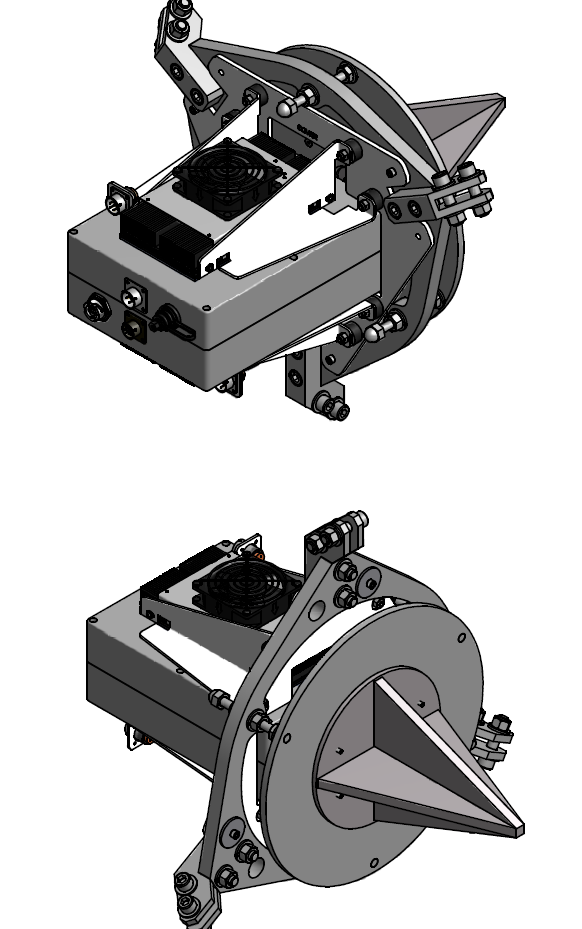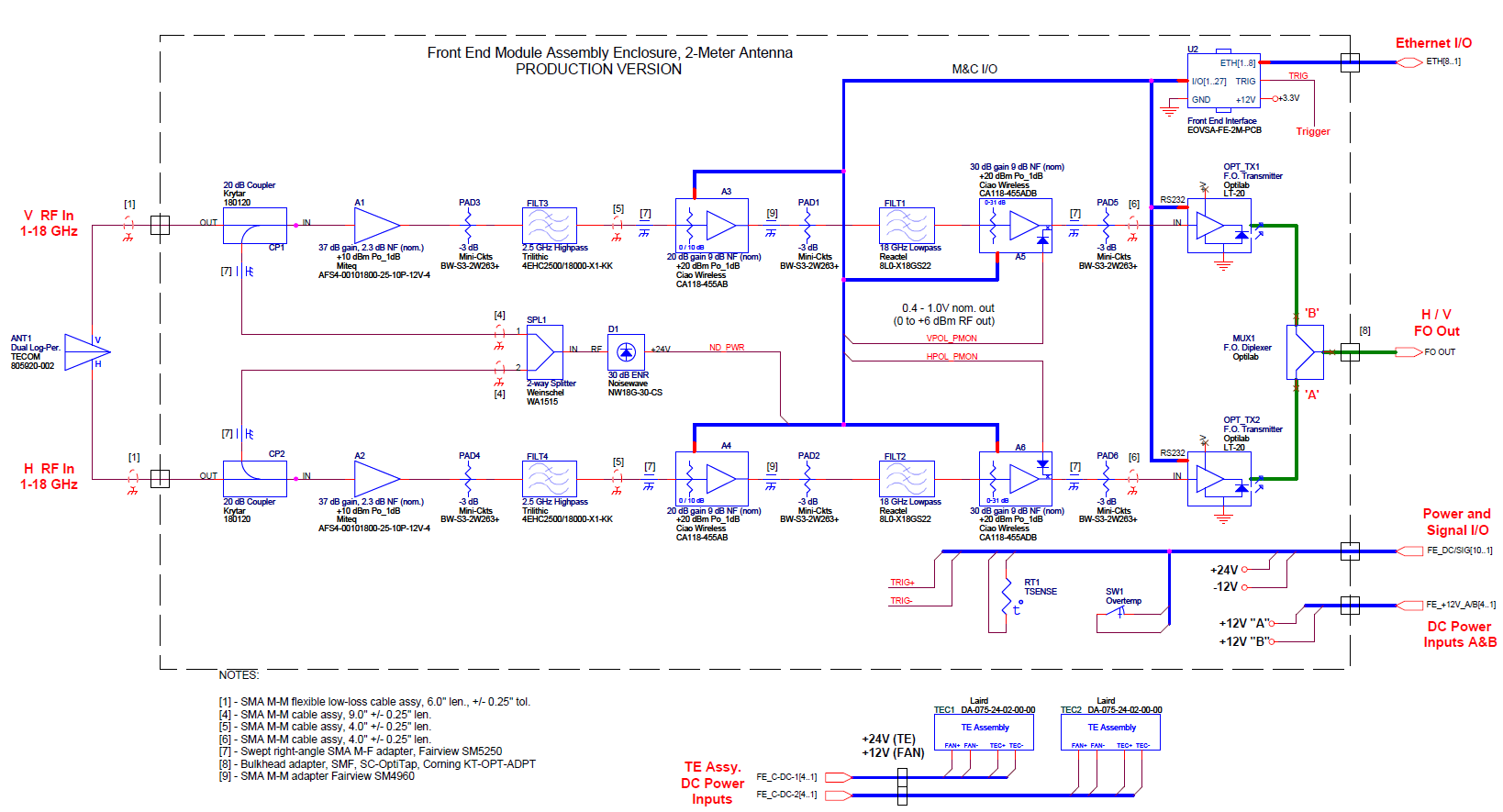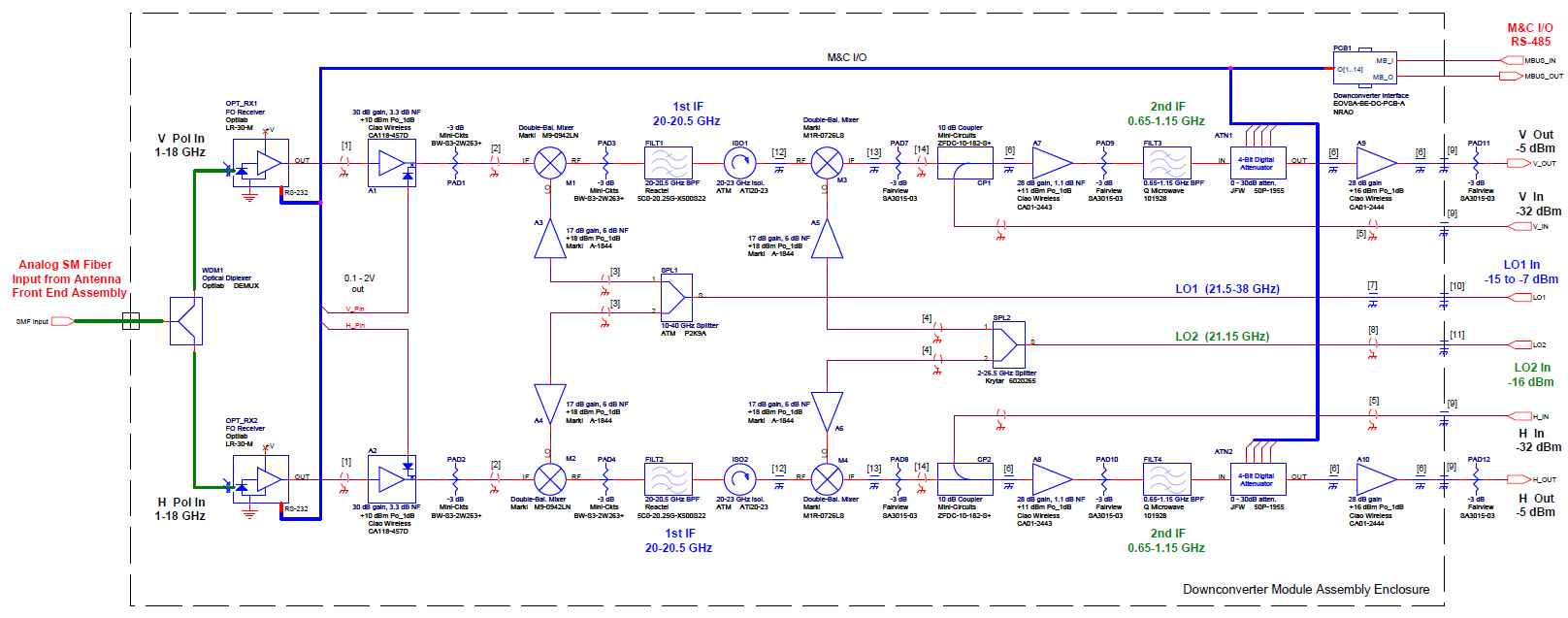Hardware Overview: Difference between revisions
| Line 15: | Line 15: | ||
=== Equalizer Coefficients === | === Equalizer Coefficients === | ||
Each ROACH has a set of four registers named 'eq_x0_coeffs', 'eq_x1_coeffs', 'eq_x2_coeffs', and 'eq_x3_coeffs'. The 'x0' and 'x1' coefficients correspond to the first antenna's X and Y polarization, respectively, while the 'x2' and 'x3' coefficients correspond to the second antenna. I will refer to each of these as one of the ROACH's four ''' | Each ROACH has a set of four registers named 'eq_x0_coeffs', 'eq_x1_coeffs', 'eq_x2_coeffs', and 'eq_x3_coeffs'. The 'x0' and 'x1' coefficients correspond to the first antenna's X and Y polarization, respectively, while the 'x2' and 'x3' coefficients correspond to the second antenna. I will refer to each of these as one of the ROACH's four IF '''channels,''' two for each antenna. The correlator can tune successively to different 500 MHz IF '''bands,''' and each is divided into 4096 '''subchannels.''' A final bit of terminology is that the tuning sequence can be in any order, and each tuning covers 20 ms, or 1 of 50 '''slots''' during a second. | ||
Revision as of 14:12, 9 April 2017
Frontend System
The front end system (Figure 1) consists of a broadband (1-18 GHz) dual-polarization log-periodic crossed-dipole feed, and a thermally-controlled RF box (called the FEM, or Front End Module) that houses the amplifiers, calibration noise source (noise diode), attenuators, and optical transmitters needed to control the gain of the system and supply the two RF signals multiplexed onto a single optical fiber output.
The block diagram for the FEM is shown in Figure 2.
Downconverter System
Digital Correlator
Equalizer Coefficients
Each ROACH has a set of four registers named 'eq_x0_coeffs', 'eq_x1_coeffs', 'eq_x2_coeffs', and 'eq_x3_coeffs'. The 'x0' and 'x1' coefficients correspond to the first antenna's X and Y polarization, respectively, while the 'x2' and 'x3' coefficients correspond to the second antenna. I will refer to each of these as one of the ROACH's four IF channels, two for each antenna. The correlator can tune successively to different 500 MHz IF bands, and each is divided into 4096 subchannels. A final bit of terminology is that the tuning sequence can be in any order, and each tuning covers 20 ms, or 1 of 50 slots during a second.



